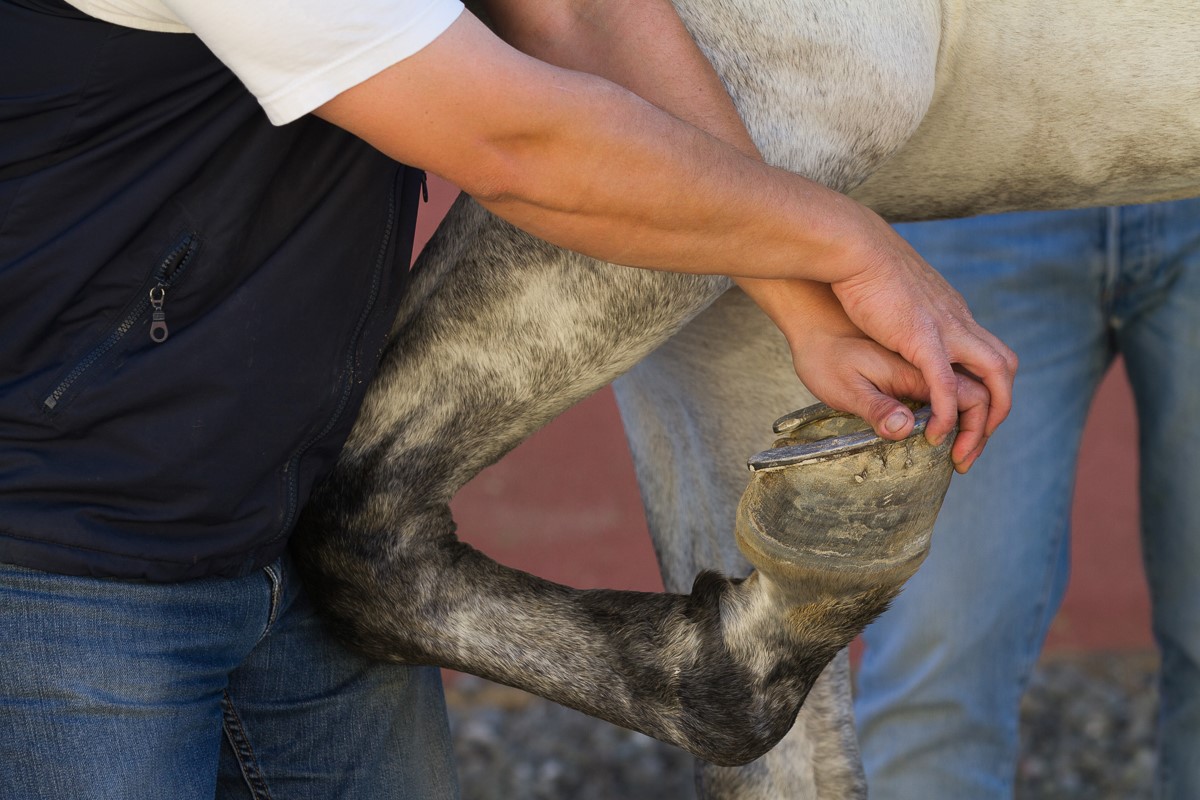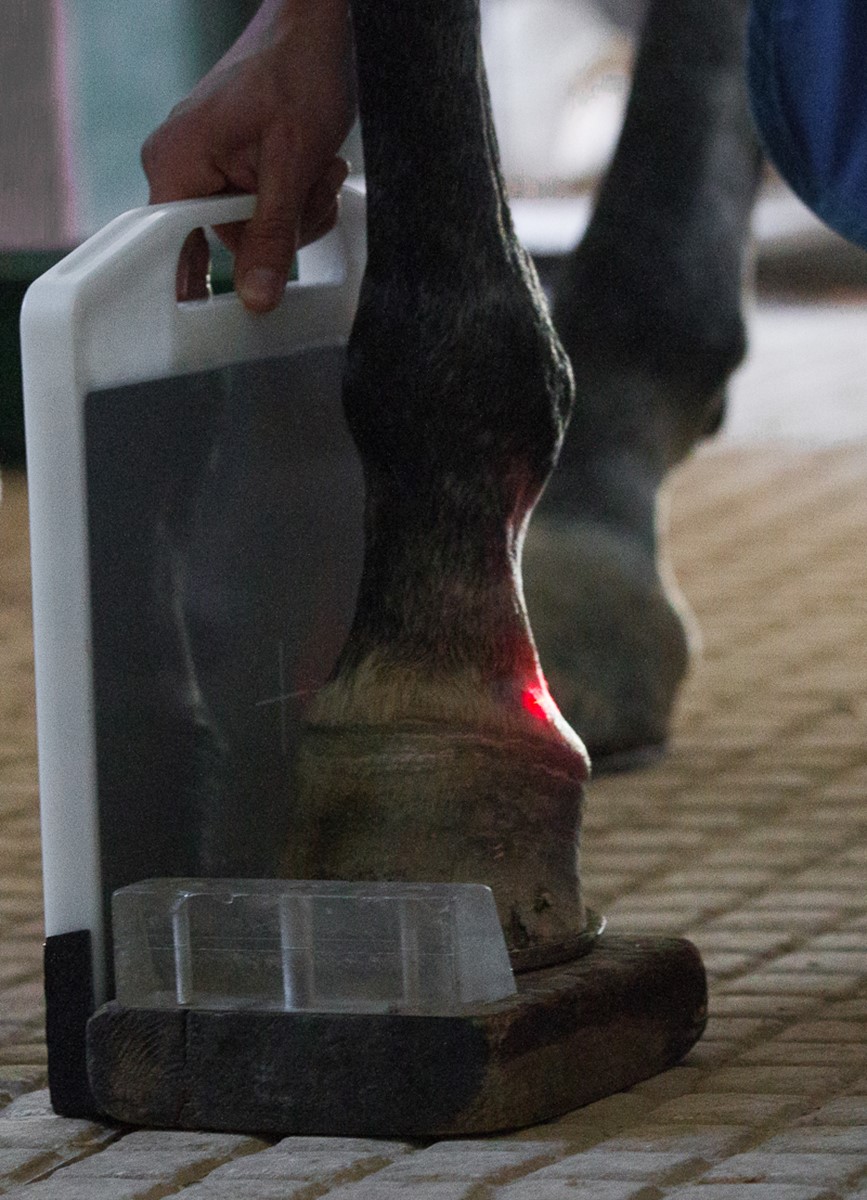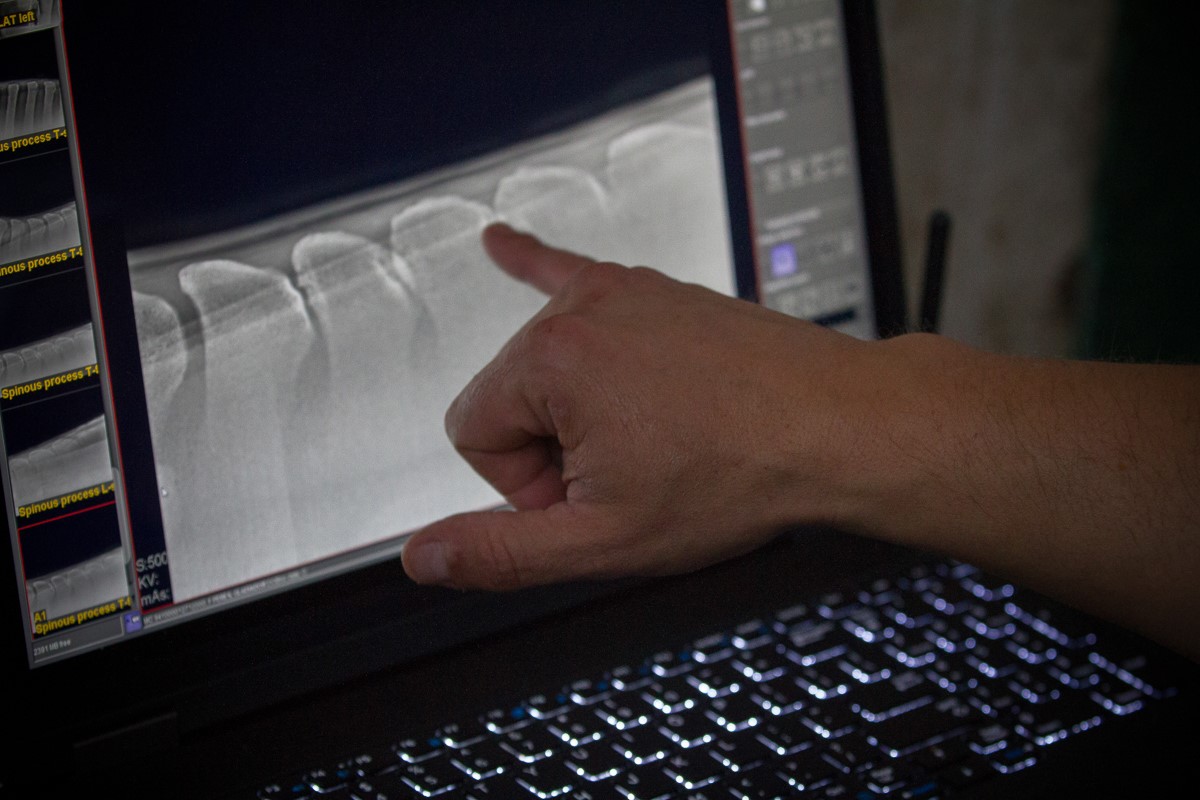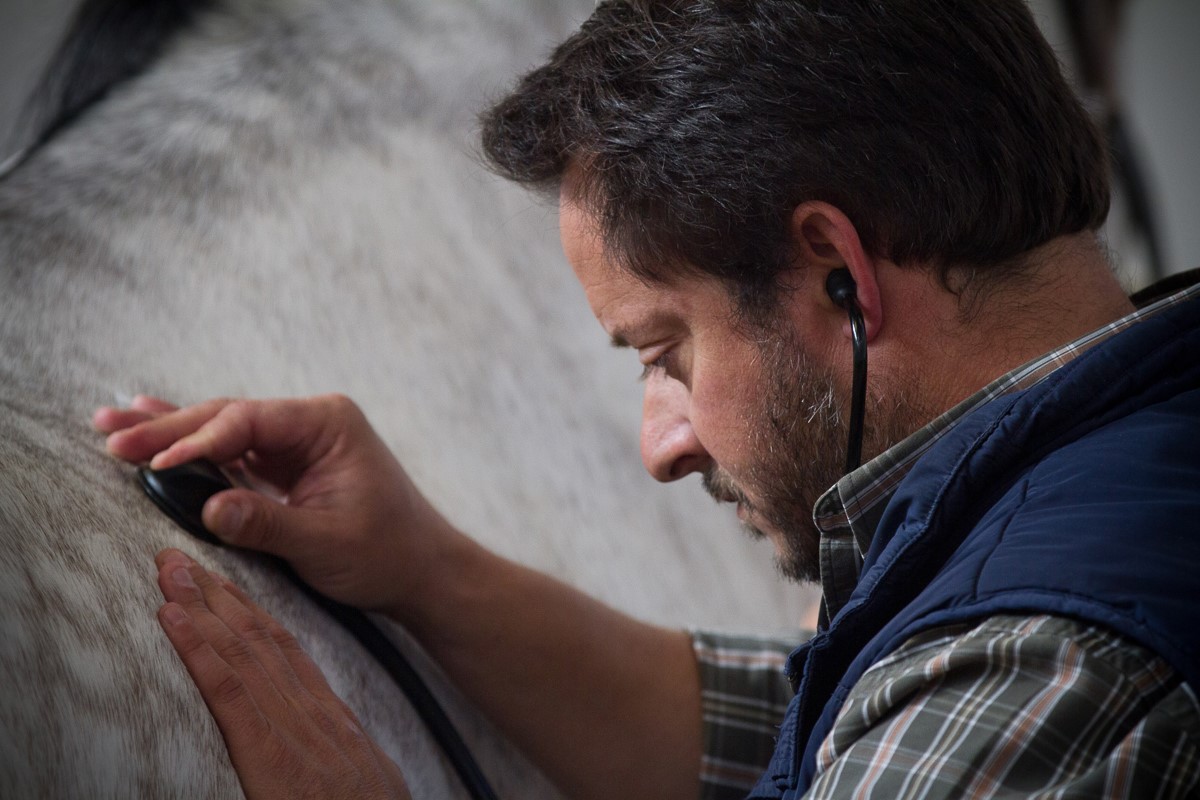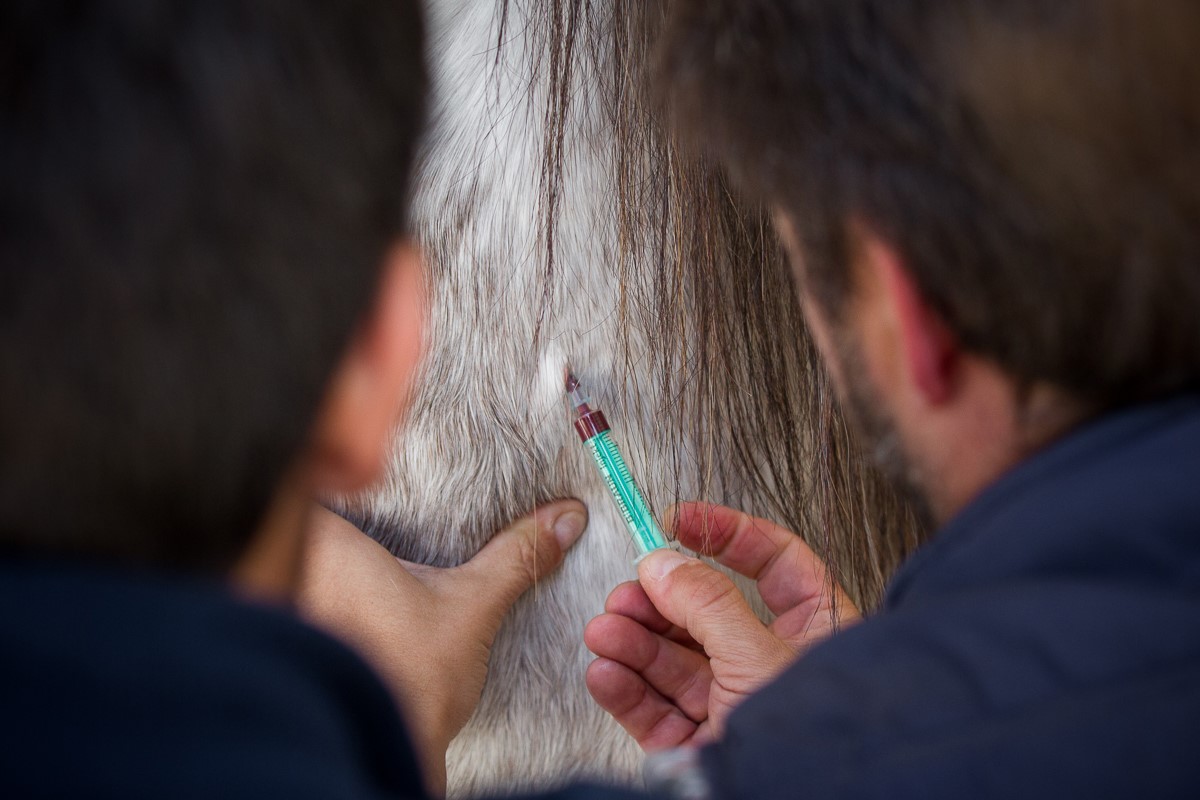ABC's of Vet Check
All you need to know about the pre-pruchase exam
Finally, your search has come to an end! you’ve found the horse of your dreams. Yet, before you commit to a final decision you have one more critical step that you should not neglect. The pre-purchase exam, also known as a ‘vet check’, will support your decision making, assuring you are making a smart, informed verdict before you pay the final payment.
Before you start, understand what a vet check is
The true purpose of a vet check is to provide the buyer with the most information possible to help guide their decision. The vet will assess general health, conformation, and soundness of the horse, always keeping in mind the goals and intended use described by the buyer. A common mistake is to think that the pre-purchase is a pass-fail test or a statement assuring the long-term health and soundness of the horse. It is extremely important to understand that the evaluation done in the vet check is a snapshot of a moment in time that tells you how healthy the horse is on that specific day. It can provide hints as to how the horse will progress, but it cannot predict the future.
How to choose the veterinary?
An important part of your decision is choosing the veterinarian who will perform the exam. Make sure you choose a veterinarian specialized in horses and who has knowledge and experience working with the breed and with a long record in vet check practice.
Also it is extremely important to clarify the veterinarian performing the exam is working for the buyer, paid by the buyer, and reports directly to the buyer. And because the buyer is paying for the exam, the rights to the information obtained, including all findings, radiographic images, or test results belongs to him/her. The veterinarian is under no obligation to share the exam results with the seller or agent unless given express permission by the buyer. When buying a horse in a foreign country you might not know the local vets. In these cases, it is usual that the seller or sales agent gets you in touch with vets they trust. If this is the situation, make sure you have a vet YOU trust in communication with the local vet, for a cross-check of the information and results of the vet check.
Discuss your goals with the vet before the vet check
Before the exam starts, it is extremely important you discuss with the vet your goals and how you intend to use the horse in the future. Be as realistic and factual as possible when sharing these considerations, as they will impact immensely on determining the vet’s advice on the vet check procedure - namely concerning the extent and content of the exams, as well as the final assessment and interpretation on the findings of the vet check.
Based on your briefing, the veterinarian will customize the exam for your needs and maximize its usefulness to you, as the process can be as simple or as extensive as you wish. Today’s modern veterinary technology have made a huge range of diagnostic tools available, providing countless ways to acquire information on a horse’s health.
This means it is also in this phase you should align with the vet the estimated costs of the vet check: average cost of a vet check in Portugal varies from 450-800€, but how much you spend is your choice, depending on how extensive you want to be in your examinations. This initial alignment of expectations will allow that the vet visit will assure that you make the right choices for your needs and your dreams.
What are the main steps in a pre-purchase exam?
In general, a pre-purchase exam will include five steps: knowing the horse history, performing a standard physical exam, execution of the moving exam, imaging and other ancillary tests. Each phase in the process can include multiple steps: remember that the detail of what’s included in your prospect’s exam depends on your briefing to the vet and on your expectations. Here, in more detail, is what is normally included in each of the main steps of a pre-purchase exam:
STEP 1. Compiling the horse's history
Typically, the veterinarian will start by understanding the buyers’ goals to customize the needs of each specific vet check. When on the location to see the horse, he will also collect important information from the seller regarding the horse’s detailed history, including medical track record, previous injuries; reading the microchip; and observing the horse in the stall.
STEP 2. Physical Examination
Next, the veterinarian will perform a comprehensive physical exam to the horse. This includes auscultation of the heart, lungs and gastrointestinal tract; an ophthalmic examination; a dental examination; and palpation of the musculoskeletal system. Essentially, the vet will evaluate every inch of the horse and will use his or her expertise to identify previous or current pathologies. The horse’s conformation, shoeing, and demeanor are all noted as well.
STEP 3. Moving Examination
Following the physical exam, a moving examination should be performed in which the horse is evaluated in-hand on a straight line at the walk and trot and longed in both directions at the walk, trot, and canter. The flexion tests will follow, helping to identify subclinical pain that could indicate future unsoundness or complication. This involves stressing specific areas of the distal (lower) limbs for a prolonged amount of time and assessing the response to stress. Depending on what was determined with the buyer, the vet might also request to watch the horse work under saddle.
STEP 4. Imaging
Imaging is not necessary in every pre-purchase situation; however, in most circumstances, radiographs are strongly recommended to allow the veterinarian to further evaluate overall joint health, as well as subclinical disease processes. The number of x-rays and views will be defined in the briefing prior to the vet check.
Ultrasound imaging is less commonly performed in a pre-purchase exam but might be advised by the veterinarian if the musculoskeletal exam reveals a soft tissue structure abnormality, for example.
Additional imaging modalities include endoscopy, gastroscopy, nuclear scintigraphy, and MRI, which are not commonly performed in a pre-purchase setting but reserved for specific cases.
STEP 5. Other Ancillary Tests
Finally, there are a few ancillary tests that the veterinarian might recommend. When the horse is going to be exported outside Europe it is mandatory to collect blood to check if the horse accommodates all exportation pre-requisites.
A drug screen is also becoming more and more a common practice to protect both the buyer and seller if the horse has been medicated in any way. Blood is sent off to a testing lab and results are typically available within two weeks.
Additionally, a complete blood count and chemistry analysis might be requested by the buyer to provide baseline values but are not always necessary if no abnormalities have been identified on physical exam.
FINAL DECISION - Does the horse fit the intended use?
Once all the information has been gathered, the vet will prepare a comprehensive report of the findings that must be shared and, if needed, discussed with the buyer. This is the time you should share the final report provided by the local vet to the vet you trust, preferably the one that will keep on following the horse once he is home with you.
It is absolutely normal that when analyzing the final report some doubts might arise. You should discuss all doubts, or any imperfections detected with your veterinarian, questioning what resulting issues you might be facing and how much they impact or not your goals - with some problems the risk might be worth the reward for your specific scenario.
Always keep in mind that no horse is perfect. When examined rigorously faults can be found with any horse. Remember you are collecting as much information as possible and analyzing it to make an informed decision as to whether you should take your new horse home or decide to keep on searching. Also important to remember that the pre-purchase exam is not a guarantee of future soundness. In the end, the ultimate decision is yours!
Being prepared in advance means you’ll start this journey knowing in advance what to expect! The vet check is part of the commitment you’re willing to accept as a future horse owner. Communicating openly and honestly with the veterinarians involved in the process will assure that everyone is on the same page and aware of the big picture, helping you to make a wise buying decision. And that means giving you the best shot at truly taking home the horse of your dreams.
REFERENCES:
‘The prepurchase exam: what to expect’ by Meghan Breen, DVM
‘Understanding the Prepurchase Exam’ by Sushil Dulai Wenholz
About Us
Lusitano World offers a combination of services dedicated to promote the Lusitano Horse worldwide and to highlight the richness of Portuguese equestrian culture. Visit our website and follow our social media platforms to find out what we can offer.
Useful Links
Our Contacts
Location:
Portugal
Telephone / WhatsApp:
00351 962 103 954
